|
11/23/2021 0 Comments Featured Guest on History Channel When I got the call to appear as a featured guest on the History Channel's Engineering That Built the World tv series my response was: "Me? You Sure? How did you hear about me?" I was told that the head of the history Channel recommended me. Really. Not sure if I can verify that but I will say that if it hadn't been for my blog on the Durant Family Saga probably no one would have heard of my fictional account of the family of Thomas Durant. My name is associated with this infamous family because of my relentless pursuit of information about them and blogging about the research journey. I went to the New York City A&E studios in August 2021 and spent about two hours interviewing with Karl Hollandt and his crew from Six West Media. And while they only used about three minutes of the total interview, I was thrilled to be a part of the episode about the building of the Transcontinental Railroad titled Race for the Railroad. I'm not an expert on the Transcontinental Railroad but I am well versed in the motivations behind why Thomas Durant conspired to take over the Union Pacific Railroad and control the contracts - so he could bilk the U.S. government out of millions by over charging for construction. It was the money he made during this time period (1864-69) that allowed him to acquire the half million acres in the Adirondacks which he planned to exploit as a playground for the rich during the Gilded Age. His son William was supposed to spearhead this venture and if you read my novels you will learned more about what happened to Thomas Durant's legacy. If you missed the first episode you can stream it online here.
0 Comments
10/10/2021 1 Comment From Novel to Screenplay I had this idea that my Durant Family Saga trilogy would get optioned one day as a spin-off of the popular streaming series Hell on Wheels, and I’d make a million dollars. That hasn’t happened. Actually, I didn’t set out writing the Durant Family Saga with the idea it would be adapted to a screenplay. That idea came later while working on my second novel in the trilogy and a fan pointed out that the family patriarch, Doc Durant, was also the main character on the tv series Hell on Wheels. Was it possible? Serendipity provided me the opportunity to connect with an entertainment executive via a zoom chat who suggested a realistic scenario. “You’re not a best-selling author, and no one is going to come knocking, nor will they pay a screenwriter 25k to write the pilot episode of a series.” So, he said, “Write it yourself.” I told him I’d give it a try and that my philosophy on writing has always been that if it ever feels like it’s a hardship, or I start to hate the process, I’d quit. He requested I develop a pilot episode and what the industry terms a ‘bible’ for the series. A bible, in a novelist’s world, would be a multiple-page synopsis, laying out each season of the series, the major plot points, and the trajectory of the story. My task was to condense nine hundred pages of my novels to fourteen pages (covering four seasons). We left it that I would send him my script when I was ready. I took an online class on scriptwriting that I could do at my own pace. I listened to webinars on the craft of writing scripts and bibles. I read everything I could. And I hired a script editor that I found thanks to Lucy V. Hays and her Bang2Write website. It took months but I finally felt confident in sending the draft of my pilot episode (about 45 pages) and the bible for the series. This is what I learned along the way. I hope it helps you if you are thinking of doing this yourself. 1. Purchase software for scriptwriting. I bought Final Draft. It formats everything for you so you don’t have to worry about margins and headers. You will need software made for scriptwriting so you don’t lose your mind over this detail; learning how to write a script is challenging enough. 2. Script readers crave white space. A script consists of Scene Heading (Int. Cabin, Day) Action, and Dialogue. Out the window went all of my pretty descriptions of place which I’m known for in my novels. I read recently in a Twitter thread by a script reader, don’t describe the sunset, we all know what one looks like. That was hard for me. Out of nine hundred pages of my trilogy, I’d guess 1/3 third is descriptive of the Adirondack mountains. Indeed, I’m writing another script based on a short story I published about a millennial being stalked by a mountain lion while snowshoeing. I’m finding it challenging not to detail the majesty of the mountains and the snow glimmering in the sun. 3. It’s all about tense. The action in the script is all present tense. This was pointed out to me by my editor. She waits for him, not She waited for him. Novelists tend to write in past tense so this was a difficult transition for me and takes a keen eye to catch. I got to the point where I searched for ed and ing words to glean where I might need to change tense. 4. POV – pick one. My novels have multiple POVs, hence when I wrote my first draft of the pilot I had multiple POVs. My editor suggested I choose one character to be the lens for the series. He reasoned that it helps the audience engage with the show because they are invested in the character’s journey. I decided to make Doc Durant’s daughter, Ella, the main POV. I’ve written about her in previous WWWB blog posts and published an essay titled The Other Durant. Her father and brother have biographies written about them, and although she was an author and poet, she didn’t even have a Wikipedia page when I first started writing about the Durant family. I questioned how to write a script with one POV if Ella is at a London dinner party while her brother William is squandering the Durant fortune clubbing in New York City? Could I write scenes without Ella in them? I would need to do so to move the plot along. He said, it won’t matter, if done right, the audience will know the arc of the story revolves around Ella and her fate. An example is The Crown series. Queen Elizabeth is not in every scene, yet we know that the people around her and everything they do, every decision they make, impacts HER. 5. Develop your logline. Your logline is your elevator pitch. What is the concept of your pilot? My logline is 1872. Bankrupt railroad tycoon, Doc Durant, summons his family home from London to rebuild their fortunes in the Adirondack Wilderness. For his daughter Ella, it means losing the love of her life and the high society lifestyle she’s grown accustomed to and she’ll do anything to stay. For the adaptation of my short story The Encounter: A Xanax-addled Millennial faces her greatest fears when she’s stalked by a mountain lion while snowshoeing in the woods. 6. Explore the craft, learn about the industry. I sent my final draft of the pilot to my industry connection but I also entered it into a few screenwriting contests through COVERFLY. I figured it can’t hurt to cast the net wide and get some feedback. My entry to the FilmFreeWay's Big Apple Screen Festival placed as a finalist. The challenge of writing a screenplay allowed me to explore a new craft, new industry and sparked my creativity. It has given me a creative outlet while I wait on the submission and revise and resubmit for two of my novels. It has honed my focus on character development and it has given me a renewed interest in writing for a different type of audience. If you want to see your novel on the screen one day—go for it. This article first appeared in Women Writers Women's Books April 2021
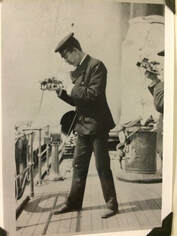 William West Durant on his yacht Utowana circa 1892. Source: Durant Family William West Durant on his yacht Utowana circa 1892. Source: Durant Family It had always been about the brother, William West Durant, not the sister, Ella. I even titled a blog Tracking William West Durant. William West Durant (1850-1934) was a scandalous genius, a man with a vision for the untamed Adirondack wilderness of the late 1800s. My novels on the Durant family have two or more Points of View (POV), I thought transferring that over to a screenplay would work. Not quite. When I sent my pilot screenplay off to an editor I was surprised when he told me, pick one POV and suggested Ella (1855-1943) - the one I had a hard time finding any information about until the discovery of her scrapbooks in an attic in Pennsylvania. The challenge was to pivot multiple POVs to Ella’s lens on reality. Firstly, and this is for those who have never converted a novel into a screenplay, I didn't know how to write a tv series with one POV if there are scenes where that person is not present. Then I thought about The Crown. Everything that happens in that tv series, even if the Queen is not present in the scene, revolves around her. The people who orbit her personal planet all impact her ability to maintain The Crown. I re-worked the pilot, the ‘bible’ all from Ella’s POV, and sent it off. My editor tells me “strong shades of OUT OF AFRICA here”. Yay! I wasn’t aiming for that, it just happens to be a true story. So the next edit is about “make this story more about Ella. It can be done with judicious POV switches throughout the script.” I’ve come to think of writing a screenplay as the ultimate omniscient POV. I am the god of the script, attempting to relay what's happening to Ella even when she’s not aware. And oh my….the things in store for her……  Chalk Cliffs at Freshwater Chalk Cliffs at Freshwater A few years ago I went to the village of Freshwater on the Isle of Wight, to scout out a location in my second novel of the Durant Family Saga trilogy: Castles in the Air. Freshwater is a step back in time. It appears nothing has changed in this small coastal village since one of the characters in my novel, Ella Durant visited it over one hundred years ago to meet the poet Alfred Lord Tennyson. Given its history I would be surprised if it wasn't a haven for artists and writers. The beauty of the cliffs and rolling hills is astounding. After finding Tennyson's home, Farringford, which is not open to the public, I went to the Dimbola Museum, once home of the famous photographer, Julia Margaret Cameron. I found a reference in a letter from Thomas C. Durant to his daughter Ella Durant dated April 1874 in which he stated he would allow Ella to stay with Mrs. Cameron in Freshwater. I speculate that the photo below may have actually been done by Cameron, although I don't know for sure. But in it Ella poses with her brother William and other friends at Isle of Wight, and it is dated 1874. Anne Thackeray Ritchie, an author and a family friend of Julia Cameron, stands tall in the back, facing right. 4/8/2020 Enough Already! Main entrance NY Public Library. Main entrance NY Public Library. In a interview on the History Author Show podcast about the Durant Family Saga, the interviewer asked me a question that had me stumped: If you could fill any gap about this fascinating family after three novels, what would you choose? Of course, there’s more I could have uncovered about the Durants to turn my trilogy into a series. I've received emails from people who were reading my books and my research journey blog. They offered me tidbits of information, leads to follow, contact information of descendants with interesting histories of their own. But for me, enough was enough. I’d spent five years of my life researching this Gilded Age family. I had traveled to several libraries and museums on the east coast of the U.S., and visited the Isle of Wight in England. At some point authors of historical fiction rely on conjecture. It is the lens we use to offer our interpretation of events given the information we have on hand. Indeed, at the end of the trilogy, in the novel, The Night is Done, the narrator, a historian, remarks: I’m sure that in the future, someone will come along and find gaps in my research. It’s the historian’s curse. Our job is to sift through the tall tales and determine what’s worth including and what’s best left as fodder for others to chew on. The truth is found in the abyss of the unknown. If my readers believe it’s me, the author saying these words, they aren’t far off. I put myself in the head of the narrator, a historian, tracking down and interviewing an elderly member of the Durant family, and by the time I was done writing the last book in the trilogy, it was how I felt. We read historical fiction to discover history in an interesting and entertaining fashion. Authors of this genre are all too aware that some research could take up a lifetime and if we wait for all the facts to be known, the stories would never get written. This is especially true as libraries, newspapers and museums digitize their collections making them more accessible to the public, uncovering new details and facts about historical events along the way. There are always new stories to tell, and I have moved on to tell them. My latest work in progress is about the men of the US Civilian Conservation Corps, who planted over a billion tree seedlings in the US during the Great Depression. The story revolves around the families who once lived in Cades Cove, a cultural heritage site at the Great Smoky Mountains National Park. After doing research about these families, I felt compelled to tell their stories. And I hope to have this novel published soon.You can read the first couple of chapters here. 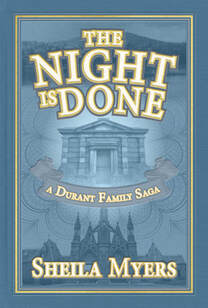 From Kirkus Review A historical novel, set largely in upstate New York’s Adirondack Park, about the troubled lives of real-life real estate investor William West Durant and his embittered sister, Ella. Myers (Castles in the Air, 2016, etc.) continues the story of the Durants in this third book in her Durant Family Saga trilogy. Thomas C. Durant was a railroad magnate who lost a fortune and died under a cloud—and intestate—in 1885. His son, William, assumed control of the family’s remaining assets and began new real estate and construction ventures in the Adirondacks. His sibling, Ella, who was somewhat of a bohemian, always felt financially shortchanged and ill-treated by her older brother—which caused litigation between the two. In the novel, told in the form of reminiscences of various characters, readers follow the arc of William’s career from his early days as a high roller (starting in 1892) to his impoverished life as an old man (circa 1931). In the end, not only has William lost all of his own wealth, but also money and land that Ella won in her final lawsuit—so they both end up losing. However, as William wrote to a friend in 1932, “I am poor, but I am happy, what more can most of us expect?” Myers writes with skill and has chosen well in deeply researching the Durant saga, which remarkably parallels Greek tragedy. It’s a truly engrossing story, and Myers does it justice. William is effectively portrayed as being more clueless than anything else, as he honestly doesn’t understand that he is treating his sister—and his wife, for that matter—very badly. He’s also obsessed with his camps in the Adirondacks, giving readers the impression that he sees the whole park as his personal fiefdom. That’s likely the reason why Myers uses the very clever gambit of telling the story from the perspective of William in his old age, when he’s “calm of mind, all passion spent,” and being interviewed by wealthy Harold Hochschild, who now owns William’s old camp, Eagle’s Nest. To compare William to the aged Oedipus is not so great a stretch. A well-wrought, classically inspired riches-to-rags tale. 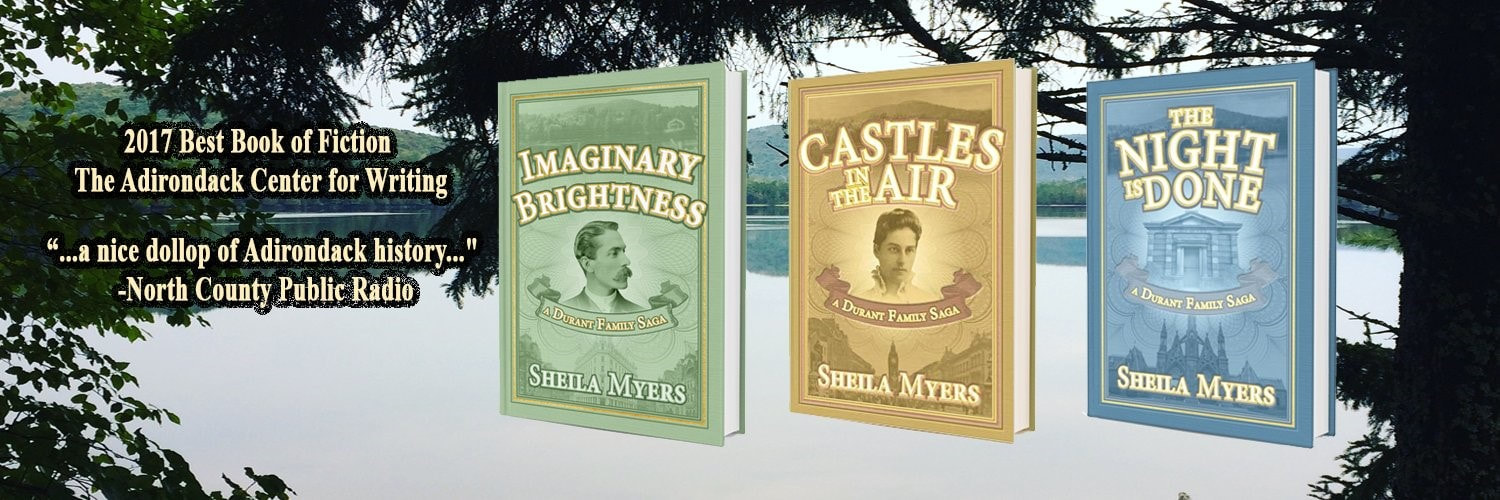 Myers (Imaginary Brightness) satisfyingly concludes her historical trilogy set in the Gilded Age by presenting the detailed downfall of ruthless real estate mogul William West Durant; his exasperated wife, Janet; and his estranged sister, Ella. In 1931, the penniless Durant recounts his tragic life. After inheriting his father’s vast wealth and interest in the Adirondack Railroad, William immediately begins to make bad investments. He squanders money on yachts, panders to princes, and builds mansions he can’t afford to run, all while hiding assets from Ella. She sues him for her rightful inheritance and tries to overcome discrimination to become a novelist. Meanwhile, Janet, verbally abused and infantilized by William, begins an affair with her doctor. After getting proof of William’s own infidelities with an actress, Janet sues for divorce.....Myers expertly depicts a precarious era soaked in vicious gossip, stained reputations, and ostentatiousness. Readers will enjoy the historical details that bring this Gilded Age soap opera to life. (BookLife) 7/20/2019 Forever Wild in the Adirondacks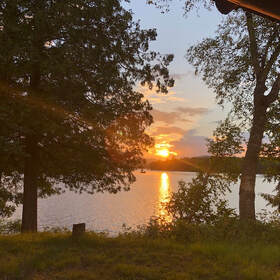 One of the pleasures of being an author is meeting with people at unique places to talk about books. This summer I met with teachers who were participating in the State University of New York Cortland Forever Wild in the Adirondacks. Teachers from various disciplines came from all over the country to stay in and learn about the Adirondack Great Camps built during the Gilded Age. History Professors Randi Storch and Kevin Sheets organized the event with a grant from the National Endowment for the Humanities. The week's itinerary included lectures on the history of land use in the region, and how it impacted the people who lived there. There were discussions on urbanization and industrialization, the respite wilderness offered for those living and working in the cities, and the romantic view people had about 'roughing it'. I spoke about the Durant family, who once owned over 1/5 million acres of land in the Adirondack Wilderness, and their plans to exploit it by developing a transportation system into the interior. 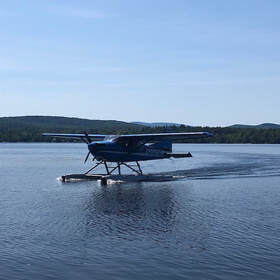 The teachers stayed at a Great Camp built by William West Durant and now owned by SUNY Cortland. Camp Huntinginton. They were even treated to an aerial view of the property with sea plane rides. 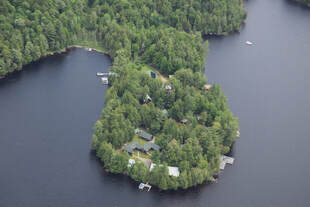 Activities included visits to other Great Camps built by Durant, (pictured below are the teachers from week 2 in front of Great Camp Sagamore), camp fire discussions about the readings, kayaking and paddle boarding on Raquette Lake. I was able to participate for one of the days and enjoyed a glorious sunset at the end. I was so grateful to be a part of the program and to meet so many dedicated teachers. May 10th, 2019 marked the 150th anniversary of the meeting of the Central Pacific and Union Pacific railroad lines in what was called the Transcontinental Railroad. This scene from the t.v. show Hell on Wheels recaps the end of the venture. Doc Durant delivers a compelling argument that the railroad could not have been built without the iron will and deceit of men like himself.
Are "truths delivered by lies no less true"? And are "dreams made reality by falsehoods no less real"? In this scene Doc Durant chastises the men in Congress who are now investigating him for his unsavory business tactics. He had a right to be indignant since the men investigating him were well aware he used bribery to get bills passed that favored and subsidized the building of the Transcontinental Railroad, lining the pockets of men like Durant and Collis P. Huntington of the Central Pacific Line. I was writing the Durant Family Saga when someone told me about Hell on Wheels. Colm Meaney does a great job reanacting Doc's blustery personality (although he looks nothing like the real Doc Durant). My saga begins where Hell on Wheels ends. The Durant Family Saga is a reunion of Doc Durant's family in the United States, after he had sent them to live abroad while he built the transcontinental. During the 1860s Durant had acquired over 1/2 million acres of wilderness in the Adirondacks and expected his son, William West, to help him develop a new transportation line that would cut through the forests and reach Canada. Along the way Doc expected he would make another fortune selling off and developing land for vacation homes and resorts. What Doc hadn't planned on was the financial panic of 1873 or the public, his business partners and stock owners turning against him. By the time his family appears on the scene in 1874, leaving behind their friends and family in England, Doc is financially bankrupt and his reputation in tatters. He had to contend with numerous lawsuits against him, a family that was not used to taking orders, and a son who had spent most of his life spending money rather than investing it. Beyond the business dealings, the Durant family life offered enough drama for me to write a trilogy. But the legacy of the Transcontinental never ends. Congress instructed special committees to investigate the business dealings of the two railroad empires and Durant and Huntington were hounded by the press. Durant died in 1885, never having to own up to his wrong-doings. Huntington's company however was fined by the government and he spent his last years constantly defending his reputation. He got his revenge though. Because soon after Doc Durant dies, Huntington takes Durant's son, William under his wing. This relationship proves unfortunate for the Durant family fortune. Huntington calculated revenge against his old rival and William was too naive to see this. William's hope to fulfill his father's ambition to develop the wilderness was financed with money borrowed from Huntington. In the end, Doc Durant was right, his dreams, made reality, were based on falsehoods. |
AuthorSheila Myers is an award winning author and Professor at a small college in Upstate NY. She enjoys writing, swimming in lakes, and walking in nature. Not always in that order. Archives
April 2024
CategoriesAll Adirondacks Algonquin Appalachia Award Cades Cove Canada Chestnut Trees Christmas Civilian Conservation Corps Collis P. Huntington Creativity Doc Durant Durant Family Saga Emma Bell Miles Finger Lakes Great Depression Hell On Wheels Historical Fiction History Horace Kephart Imagination National Parks Nature Publishing Review Screenplay Short Story Smoky Mountains Snow Storm Stone Canoe Literary Magazine Thomas Durant Timber Wilderness World War II Writing |
|
|
All materials Copyright 2022
Any reproduction, reprint or publication without written consent of author prohibited. |
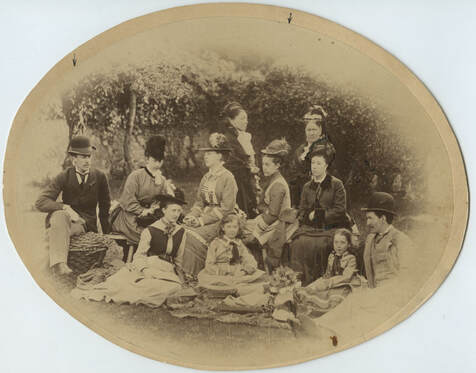
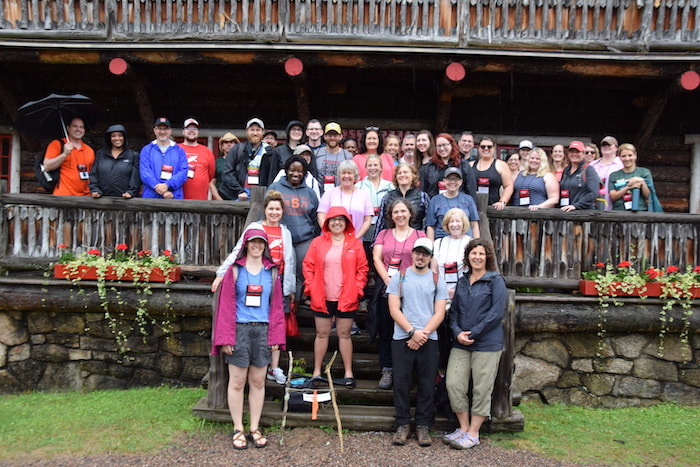
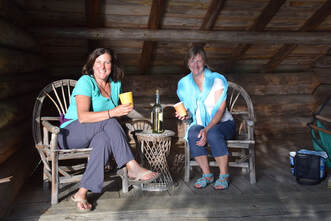
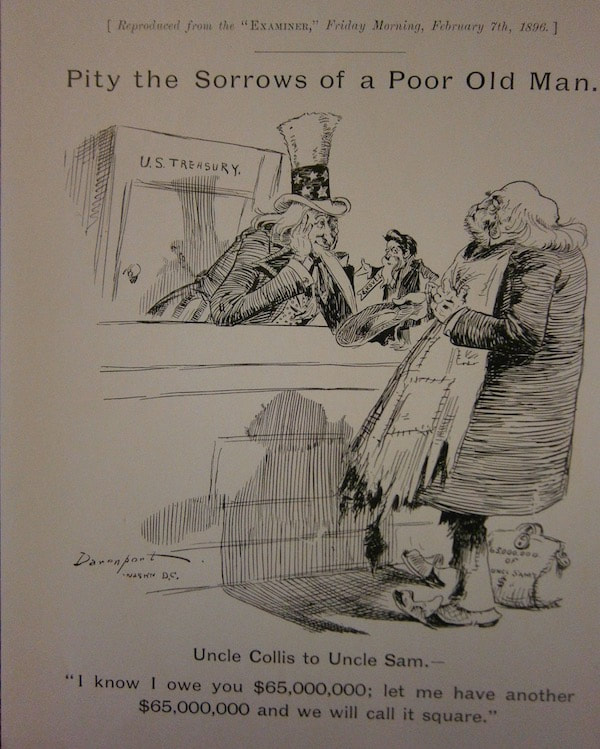
 RSS Feed
RSS Feed